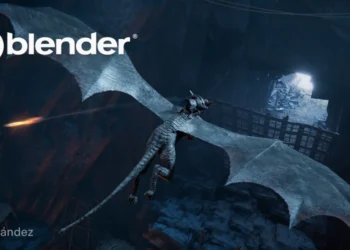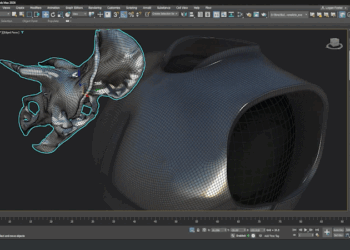Epic Games has released Unreal Engine 5.7, adding multiple production-ready toolsets, better platform support, and workflow changes aimed at improving open world creation, rendering performance, and character animation.
The Procedural Content Generation framework has reached production-ready status, providing creators with faster tools to build large, varied environments. A new PCG Editor Mode includes customizable tools for drawing splines, painting points, and creating volumes linked to PCG Graphs for real-time parameter control. The system now features GPU compute performance improvements and supports dynamic GPU parameter overrides. Epic has also introduced a Polygon2D data type for defining and manipulating closed areas, along with new spline operators. A related feature, the Procedural Vegetation Editor, debuts in an experimental state, offering a graph-based workflow for creating vegetation assets with Nanite support.
Rendering updates include Nanite Foliage, an experimental geometry system for rendering high-density vegetation efficiently on modern hardware. It leverages voxel-based rendering to handle millions of small elements such as tree canopies without visible transitions or level-of-detail management. The Substrate material framework is now production-ready, allowing complex layered materials with physical accuracy across all platforms. MegaLights has advanced to beta, offering scalable lighting with dynamic shadow-casting and support for multiple light types.
MetaHuman integration has expanded with new platform compatibility for Linux and macOS users through the MetaHuman Creator Unreal Engine plugin. Users can now automate editing and assembly processes via Python or Blueprint scripting, conform meshes across poses, and record real-time facial animation using mobile devices. New features for hair authoring include joint-based deformation and a Houdini workflow using guide-driven presets.
Animation tools gain workflow improvements through a refactored Animation Mode and Selection Sets for faster rig control. The IK Retargeter now better manages foot contact and supports stretch animations, while the Skeletal Editor introduces sculpting tools integrated with weight painting and bone placement. A new one-way collision system improves physics-based interactions, and a Dependency View provides clearer visualization of rig data flow.
Virtual production features include a Dynamic Constraint Component for motion capture props, allowing natural attachment and interaction in real time, and a Live Link Broadcast Component for multi-machine data streaming. The updated Composure compositing tool improves real-time integration of live-action and CG elements, adding shadow and reflection blending and an enhanced keyer.
A new AI Assistant within the Unreal Editor provides in-context help, code generation, and guided support directly in the workspace. The Home Panel now centralizes access to documentation, tutorials, and project management, with an interactive onboarding sample for new users.
To find out more, visit Epic’s website.




